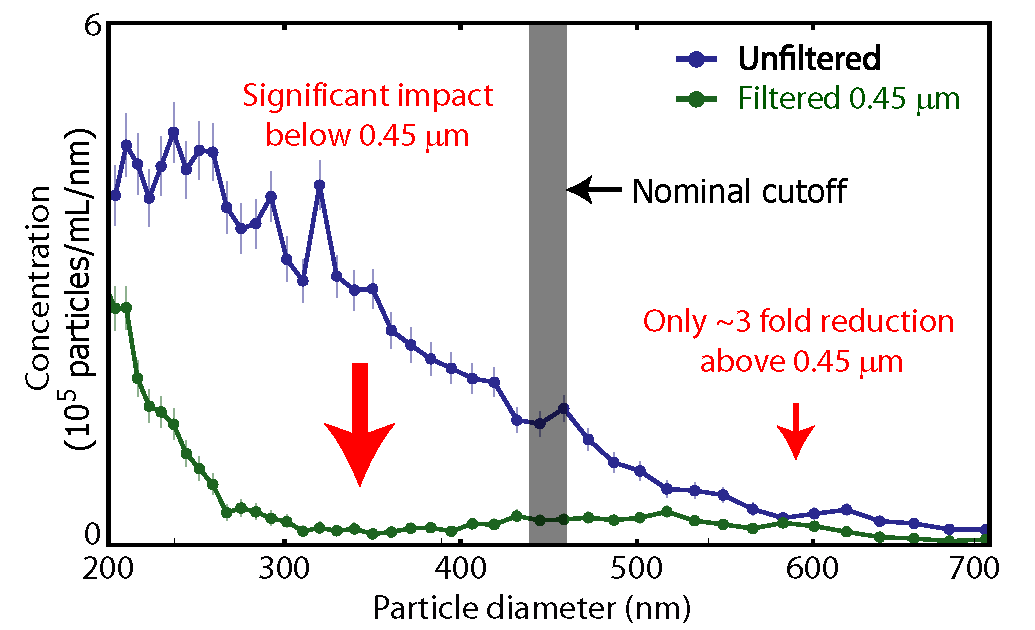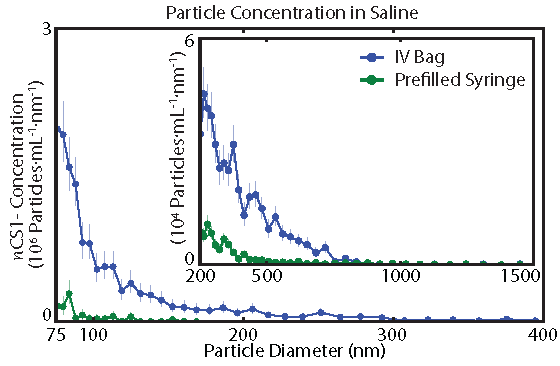EveryDayTM nanoparticles: what’s in IV saline?
At Spectradyne, we are always curious about the nanoparticle content of any material! For this reason, we created our “Everyday Nanoparticles” series, so we could share some of the data from objects that piqued our curiosity.
Cleanliness of any fluid put into the human circulatory system is of paramount importance. Any particulates present must be physically small enough to easily pass through the circulatory system, be processed and released as waste, in addition to being non-toxic. Stringent regulatory requirements already exist for both visible (>100 µn;) and sub-visible (1-1000 nm) particulates in parenteral liquids.
As reliable measurement techniques for nanometer (<100 nm) and sub-micron (100-1,000nm) particles become available, we can expect closer scrutiny of these particulates. While much attention is spent on looking at these particulates in drug formulations themselves, IV saline also needs to be checked for particulates. Spectradyne’s innovative nCS1TM nanoparticle analyzer is ideally suited for accurate quantification of these particulates.
To demonstrate the efficacy of the nCS1 in looking at IV saline, two sources of 0.9% saline were compared for particulate content. One source was an IV bag, the second was a pre-filled syringe. The figure to the right shows the results for two size ranges, 75-400 nm and 250-1600 nm (inset). The table below summarizes the absolute concentration results.

The results clearly show that the pre-filled syringe saline (purple) is cleaner than the bagged IV saline (blue). The measurements highlight the broad size range of the nCS1 (in this case 75-2,000 nm) over a concentration range of nearly six orders of magnitude.
In a related study, the effect of filtering a nanomedicine component was recorded using the high resolution of the nCS1. A sample containing a broad distribution of ferromagnetic particles used for cell isolation was analyzed before and after filtration through a cellulose acetate membrane with a 0.45µn; nominal pore size. As a positive control, 794 nm polystyrene beads were added to both samples at a final concentration of 2×107 particles/ml (the control was added to the filtered sample after filtration).
The results of the filter study are shown below, with the unfiltered sample in blue and the filtered one in green. What was surprising was that the filter removed a significant number of particles well below its rated size of 0.45µn;. In addition, the filter showed relatively poor (only about 3-fold) particle rejection in the 450-750 nm size range:

No other nanoparticle analysis technology can make the measurements shown above with the resolution, reliability and ease of the nCS1
For more information, please send an email to info@spectradynellc.com.
